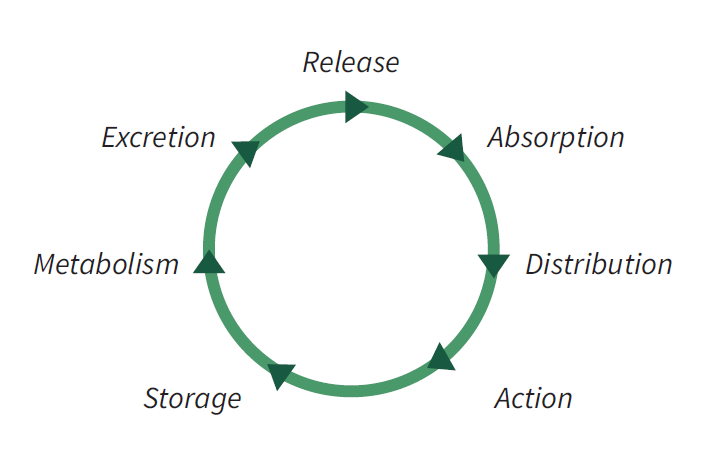Tetrahydrocannabinol (THC) and Cannabidiol (CBD), the main active compounds in cannabis, are substances with significant therapeutic potential. Their effects (scope, intensity, location and duration) primarily depend on their pharmacology.
What happen when these substances enter our body?
- Release: THC and CBD are released from the administered formulation. Controlling the speed of this phase can ensure intense and almost immediate effects or slower but more stable and lasting effects.
- Absorption: due to their high lipophilicity, they easily penetrate most of the body’s physical barriers.
- Distribution: distribution can be local (limited to the site of administration) or systemic (if it reaches the bloodstream).
- Action: THC primarily acts as an agonist of the CB1R and CB2R receptors in the endocannabinoid system. The main function of CBD is to serve as an allosteric regulator of the CB1R receptors in the endocannabinoid system.
- Storage: their high lipophilicity facilitates storage in adipose tissue, which can slow down their complete elimation from the body and contribute to their persistence.
- Metabolism: mainly in the liver, THC and CBD are enzymatically transformed into dozens of different derivate substances.
- Excretion: THc, CBD and their metabolites will be excreted in roughly the same proportion through urine and feces.
